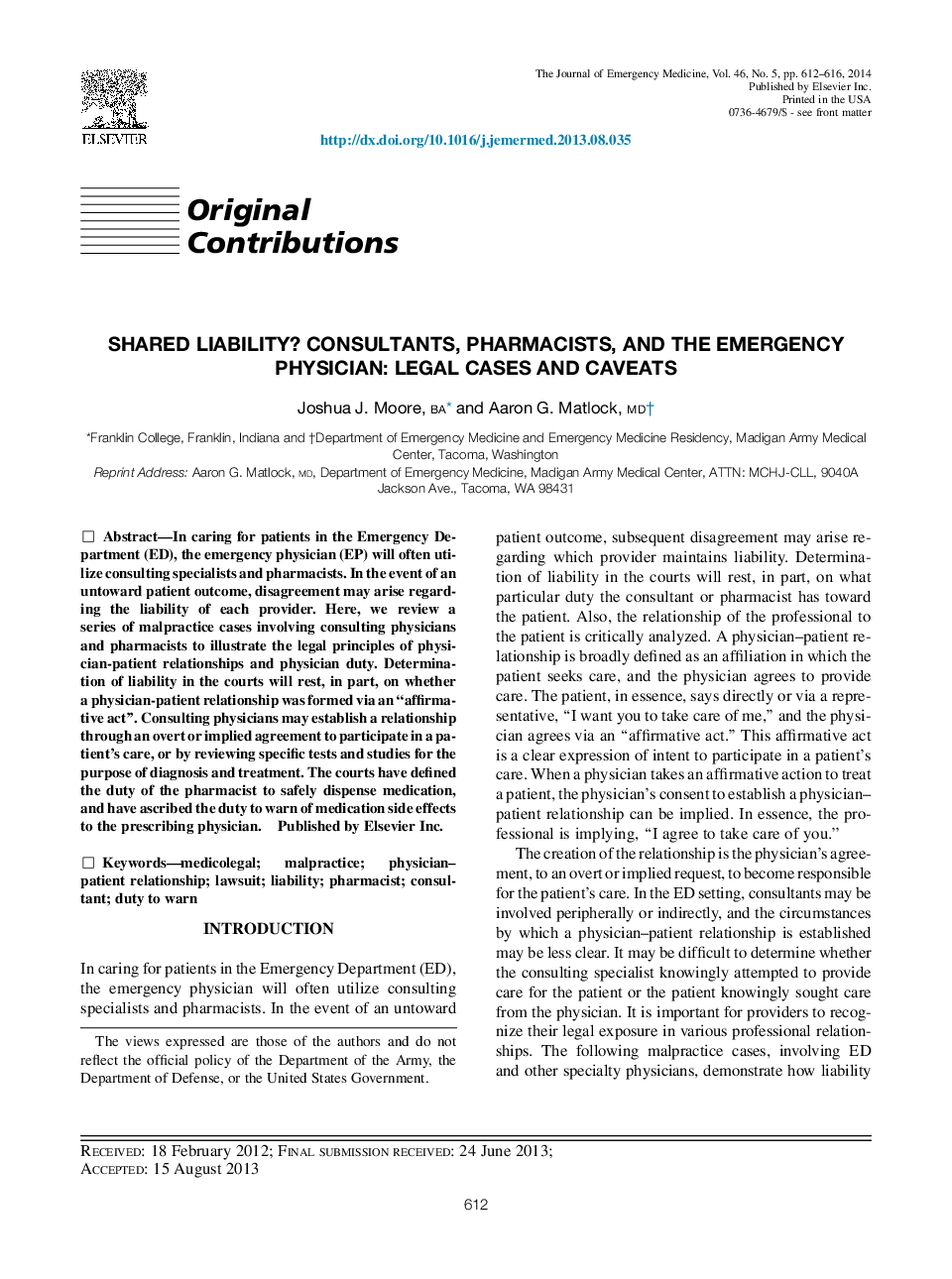| Article ID | Journal | Published Year | Pages | File Type |
|---|---|---|---|---|
| 3247516 | The Journal of Emergency Medicine | 2014 | 5 Pages |
In caring for patients in the Emergency Department (ED), the emergency physician (EP) will often utilize consulting specialists and pharmacists. In the event of an untoward patient outcome, disagreement may arise regarding the liability of each provider. Here, we review a series of malpractice cases involving consulting physicians and pharmacists to illustrate the legal principles of physician-patient relationships and physician duty. Determination of liability in the courts will rest, in part, on whether a physician-patient relationship was formed via an “affirmative act”. Consulting physicians may establish a relationship through an overt or implied agreement to participate in a patient's care, or by reviewing specific tests and studies for the purpose of diagnosis and treatment. The courts have defined the duty of the pharmacist to safely dispense medication, and have ascribed the duty to warn of medication side effects to the prescribing physician.
